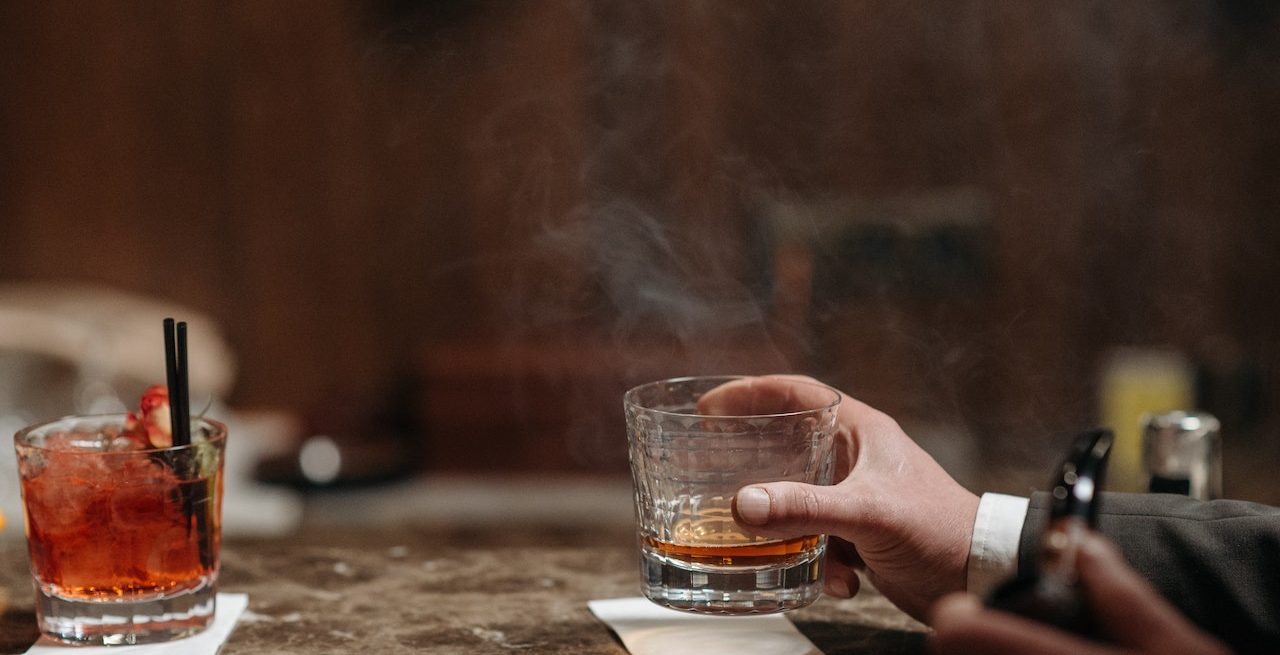Overcoming Addiction in the Restaurant Industry
5 Min Read By Chef Ashish Alfred
I knew I had hit rock bottom as an addict when I did a drunken face plant onto the concrete sidewalk near the restaurant I owned and then used super glue to put my face back together.
It was as bad as it sounds. But things got worse. For some of us who are addicted to drugs or alcohol or both, rock bottom isn’t low enough to motivate change.
My lowest of lows came not long after that while riding with my mother in her car.
I loved and respected my mother. She was, and is, a wonderful mom, an exemplary human being, and an accomplished professional with a PhD.
But one afternoon, as we rode near my restaurant, she pulled over and ordered me out of her car. She said she couldn’t take it anymore. She gave me a choice: get help or else she would be out of my life.
I did not immediately agree. To my addicted brain, that was a hard choice.
You can super glue a face back together. But a whole life? I wasn’t so sure.
The odds were not on my side. According to the National Institute on Drug Abuse, over 20 million people in the United States were diagnosed with substance use disorders in the past year. And only 10.3 percent of people who had substance use disorders received treatment.
For those who don’t, the prospects are grim. More than 109,000 people in the U.S. died of drug overdoses last year, according to the Centers for Disease Control and Prevention.
I’m here today writing this — as a now-successful owner of several restaurants — because I got help. It was the toughest thing I ever did in my life. Words cannot adequately capture what getting clean was like.
I don’t blame my addiction on the restaurant industry. But it was in this industry that my addiction found ways to flourish.
The hospitality industry is right up there with the construction and mining industries for high levels of employee substance use disorders. Restaurant and bar workers know the reasons all too well:
- Pressure-cooker stress levels.
- Long hours and irregular schedules.
- Pay not always the greatest (but somehow always enough to score the next drink or fix).
- An after-hours social culture that blows off steam by partying.
It’s easy for those of us who spend large parts of our lives working in restaurants to sort of turn our workplace into a clubhouse. Yes, it’s where we earn our living, but it’s also where some of our best or only friends are also our coworkers. Alcohol is always nearby. We feed off one another’s energy. We don’t always like each other, but other times we like each more than is appropriate. We often enable one another’s addictions.
There’s a tendency to want to attribute substance use disorders to each individual’s choices. That’s fair enough up to a point, but it’s not the whole picture. The realities of working in a restaurant put the onus on those of us who are owners to think intentionally about the work environment we’ve created.
The realities of working in a restaurant put the onus on those of us who are owners to think intentionally about the work environment we’ve created.
Workplaces don’t happen by accident. They’re designed. They might be designed poorly or well, but the restaurant owner literally has to take ownership of work conditions as conscious, deliberate choices.
Author and business guru Michael Gerber (The E-Myth Revisited — an oldie but a goodie for small-business insight) talks about “working on your business” in addition to working in your business, literally designing it to function the way you want. That’s what we have to do as restaurant owners: Work on our businesses to make each of them a healthy workplace.
The National Institute for Occupational Safety and Health (NIOSH) actually has a program — which I was unaware of until I sat down to tackle this article — to help with that, called Total Worker Health® (TWH).
NIOSH defines the TWH program as “policies, programs, and practices that integrate protection from work-related safety and health hazards with promotion of injury and illness-prevention efforts to advance worker well-being.” (I would just say it’s valuing our employees and respecting them as human beings.)
NIOSH goes a step farther and recommends creating a “recovery-supportive workplace” to address factors that cause or enable a substance use disorder, and to get rid of barriers and stigma to acknowledging the need for recovery. I never thought about it in exactly those terms, but this approach makes a lot of sense to me.
SHRM (formerly the Society for Human Resources Management) has a good primer on its website called Employing and Managing People with Substance Use Addictions. It’s not exactly a fun read, but that’s because it’s a difficult topic that a lot of us would rather not face. But it’s part of what we sign on for as restaurant owners.
Enough acronyms. The bottom line is we really have to be accountable as restaurant owners for making our businesses good places to work rather than allowing them to be magnets for addictive behavior.
The bottom line is we really have to be accountable as restaurant owners for making our businesses good places to work rather than allowing them to be magnets for addictive behavior.
I will readily admit that facing this stuff is tough. I’m a chef. On most days I just want to create amazing dining experiences for my customers. I’m not usually “in the mood” to deal with all the behind-the-scenes realities of running a business. So, candidly, I get a lot wrong while I’m trying to make it all right.
I call those moments “micro failures.” And I long ago changed how I view failures, whether they be big or small, thanks to something NBA (and business) legend Michael Jordan once said: “I have failed over and over again in my life. And that is why I succeed." His statement flipped my belief on its head: Failure isn’t bad.
I have to remind myself that failures lead to improvement and, in cooking, maybe even perfection. On any given day, for example, I have to taste a sauce 25 to 50 times to get it just right: “Fail, fail, fail…ahh…that’s it.”
After all, it took me years of micro failures — burning myself on the stove and nicking my fingers with knives — to learn how to cook. When I was just starting out, my mother was skeptical of my cooking aspirations until she saw my scars. Then she knew I would do whatever it took to succeed as a chef.
To master something, you have to do it over and over and over. The difference between me and the other guy in the kitchen is, I’ve messed things up 1,500 times, while he’s only messed up 500 times. Because I’ve made a lot more mistakes than he has, I’m more qualified to be in charge of the kitchen. It’s simply about learning from mistakes and turning each micro failure into a recovery.
And recovery — whether it’s fixing little failures in the kitchen, super-gluing your face back together, or taking the first step away from a substance use disorder — always has to be the goal.
September is National Recovery Month. But why not start early? As restaurant owners, we have the power to put that goal at the center of attention for our employees every single day.


